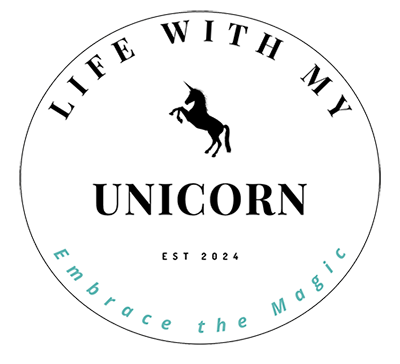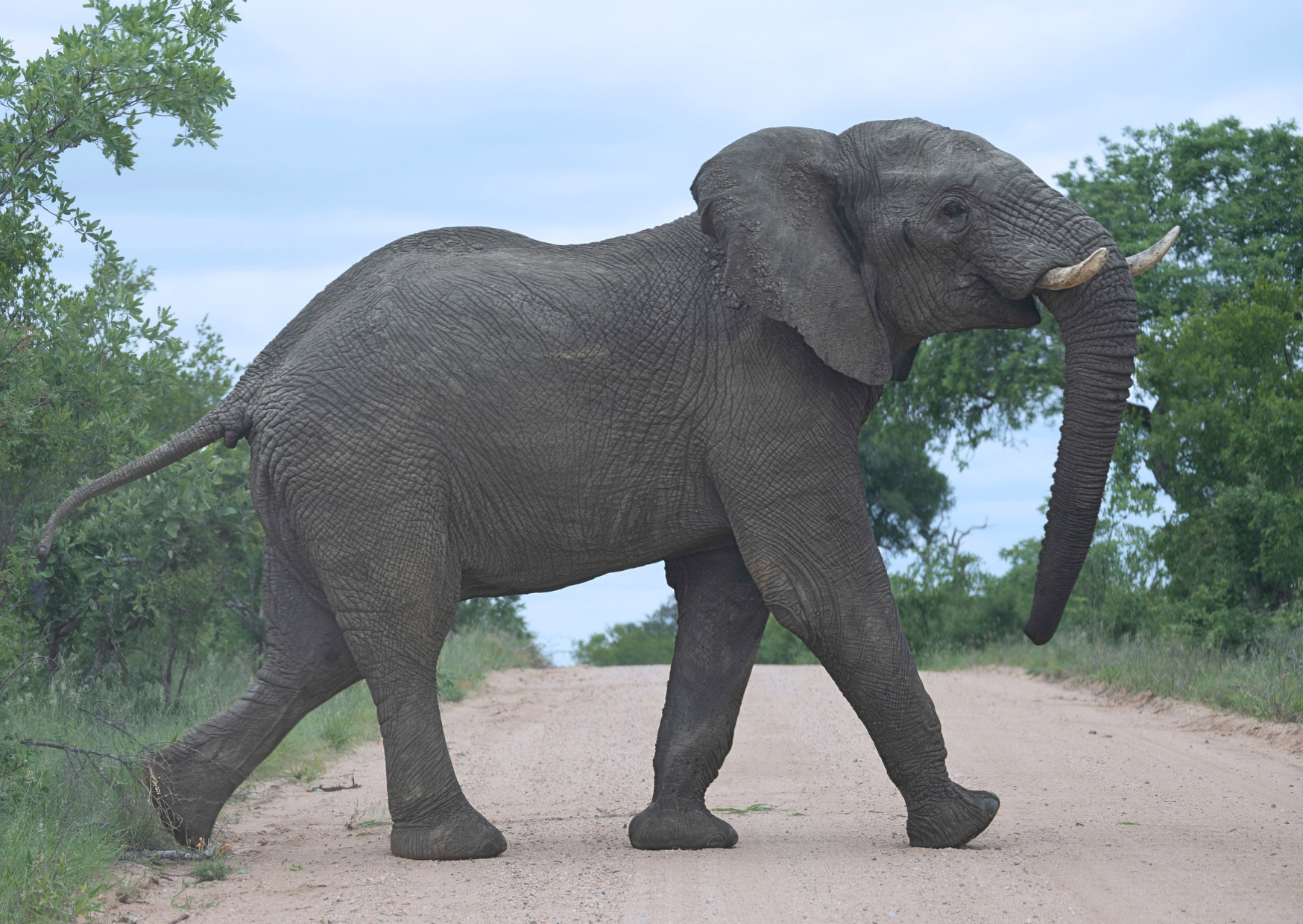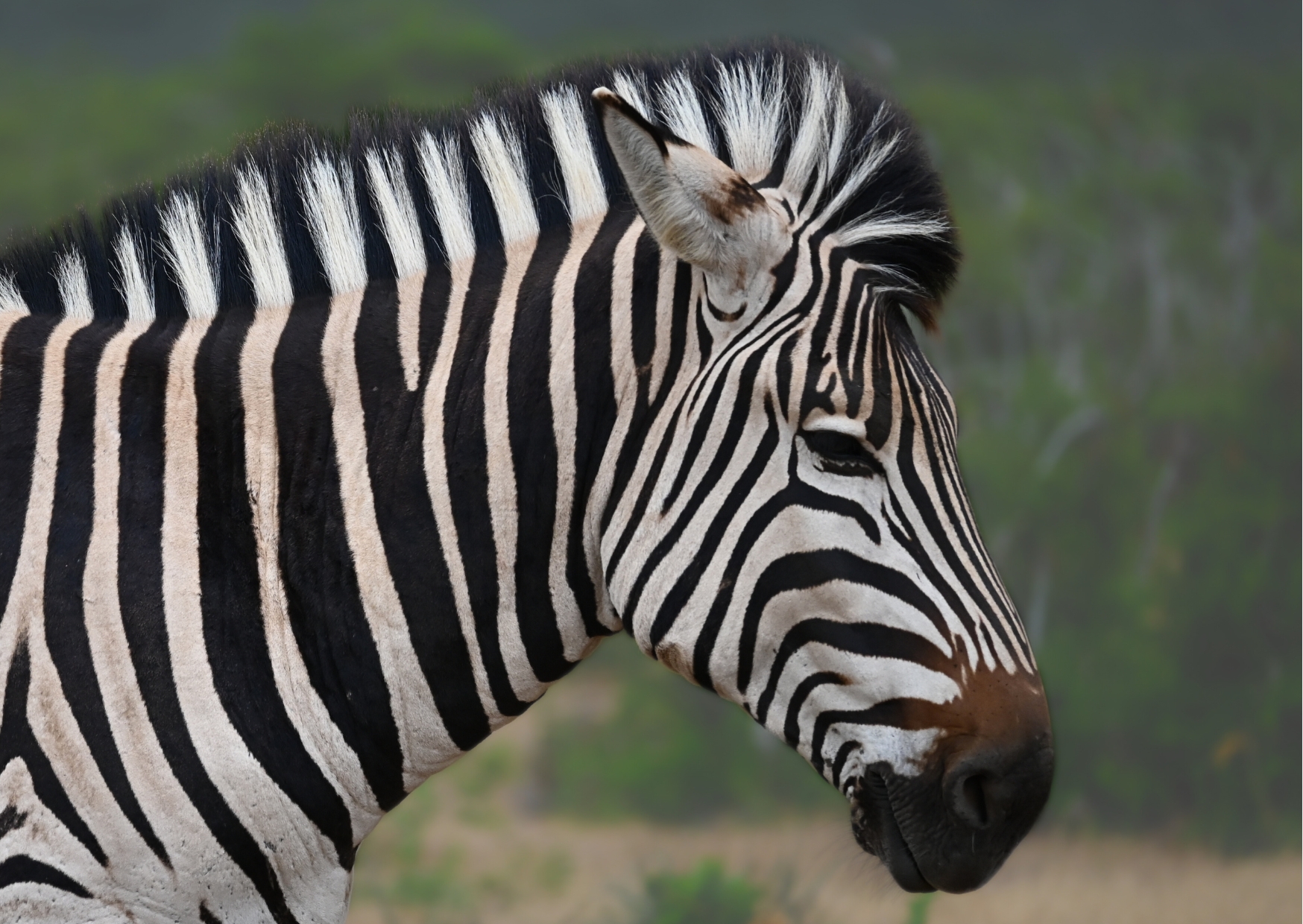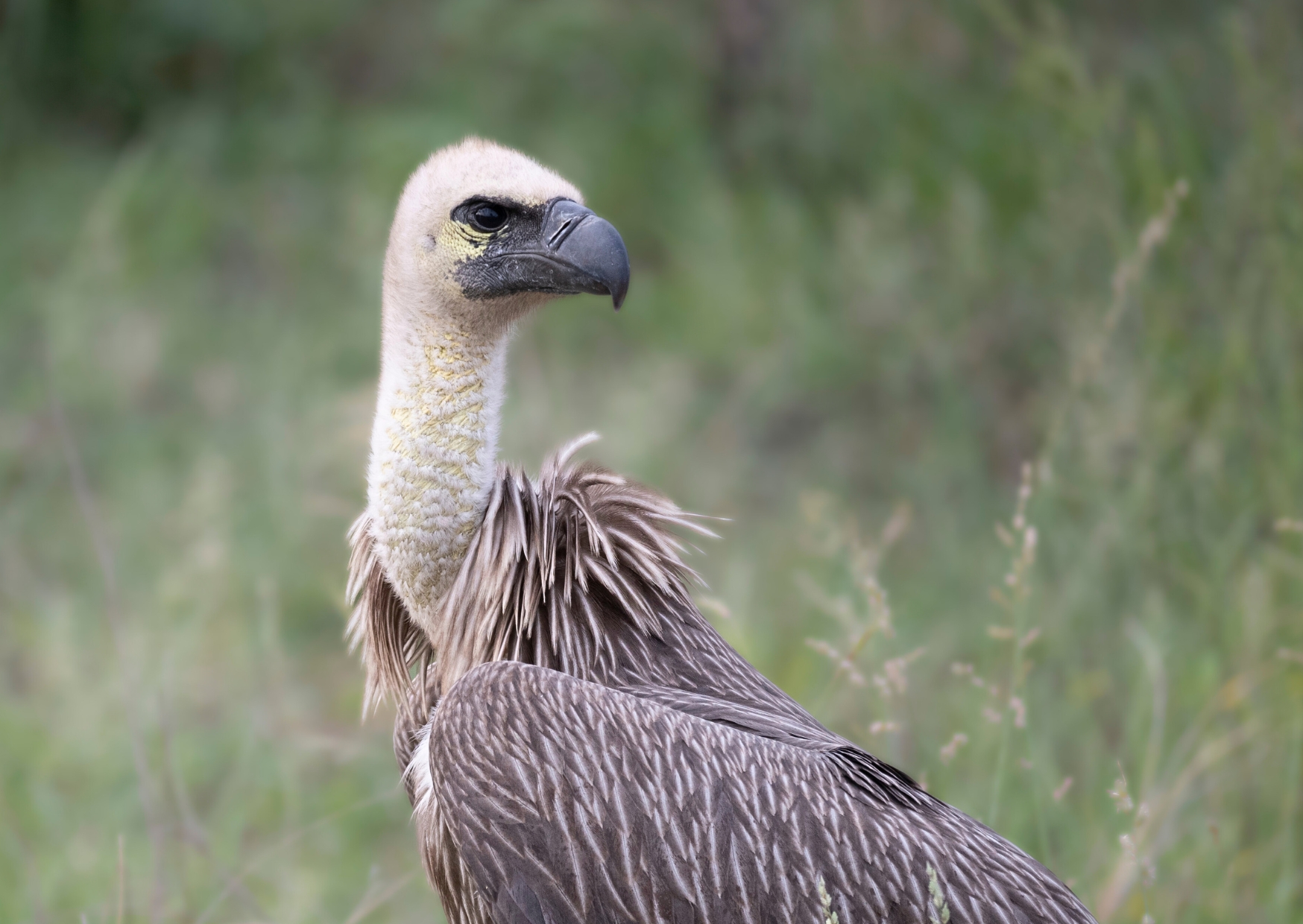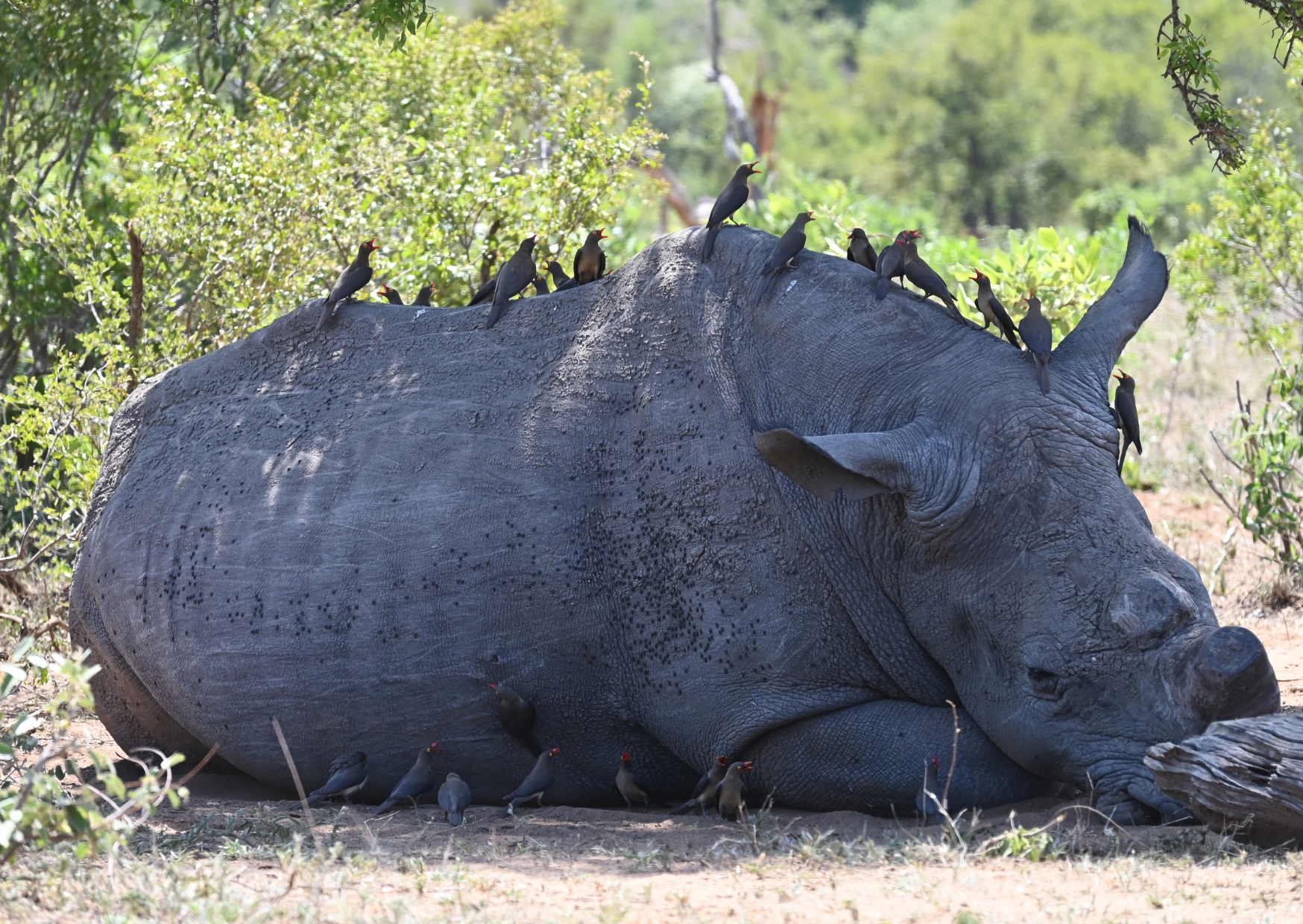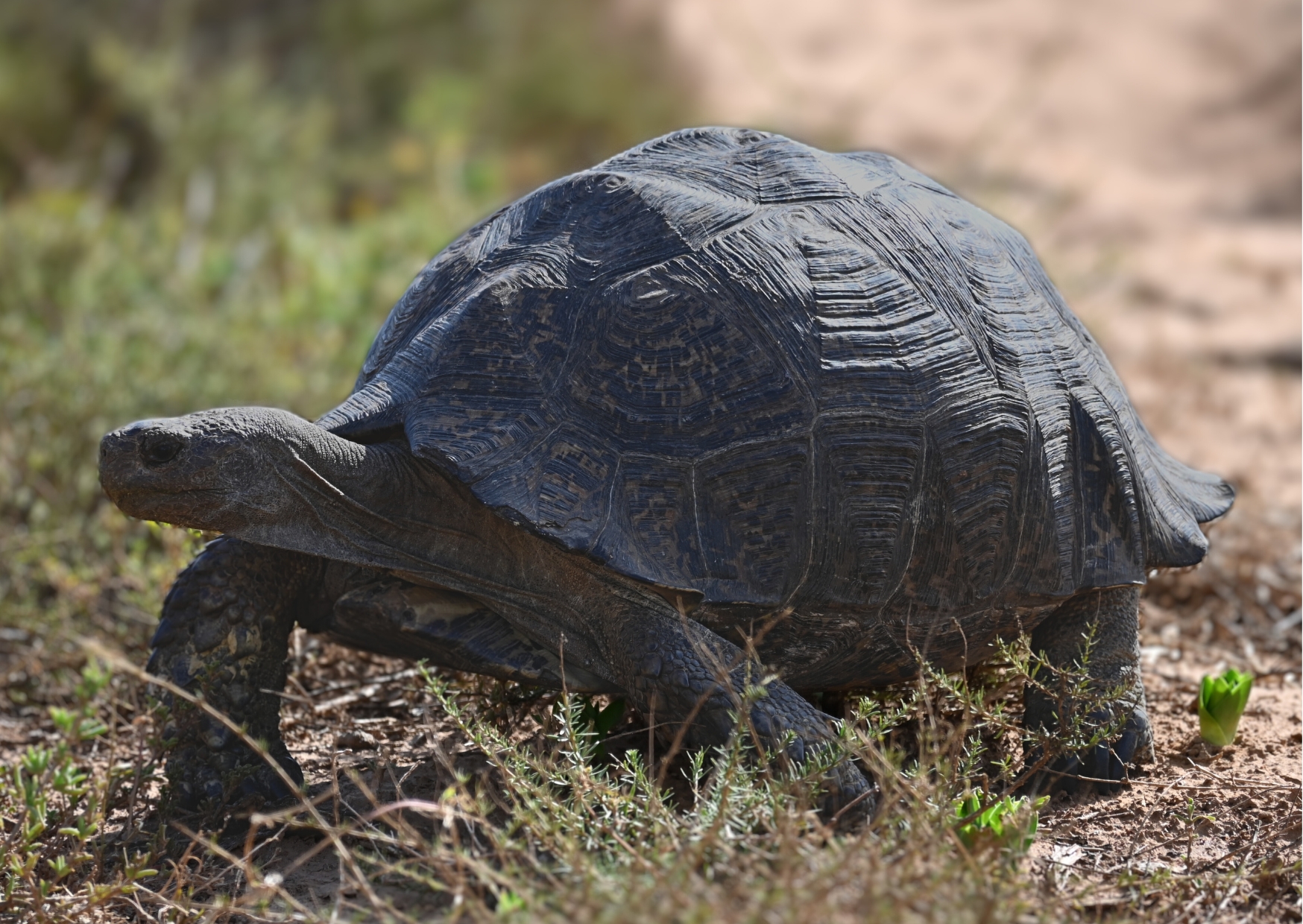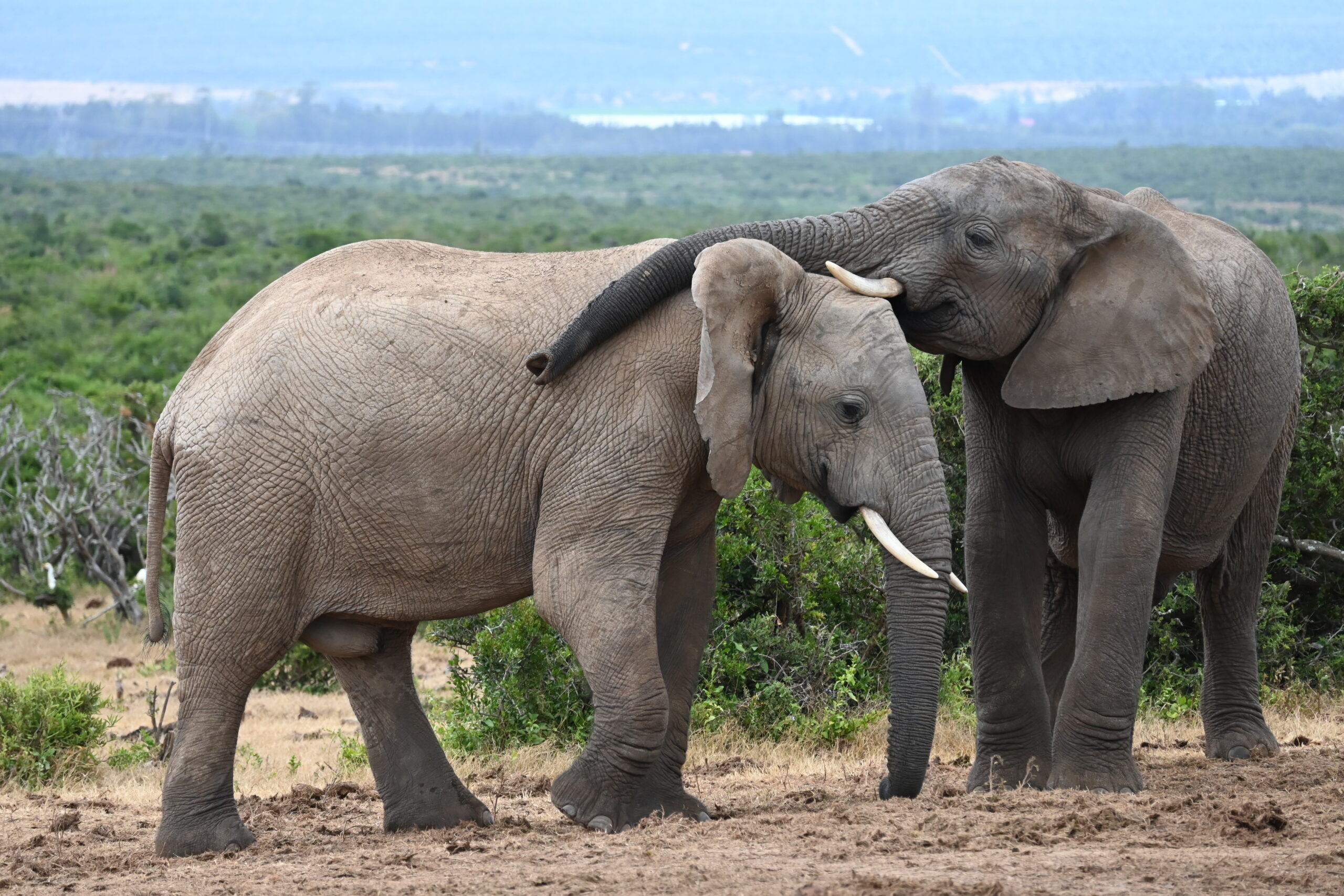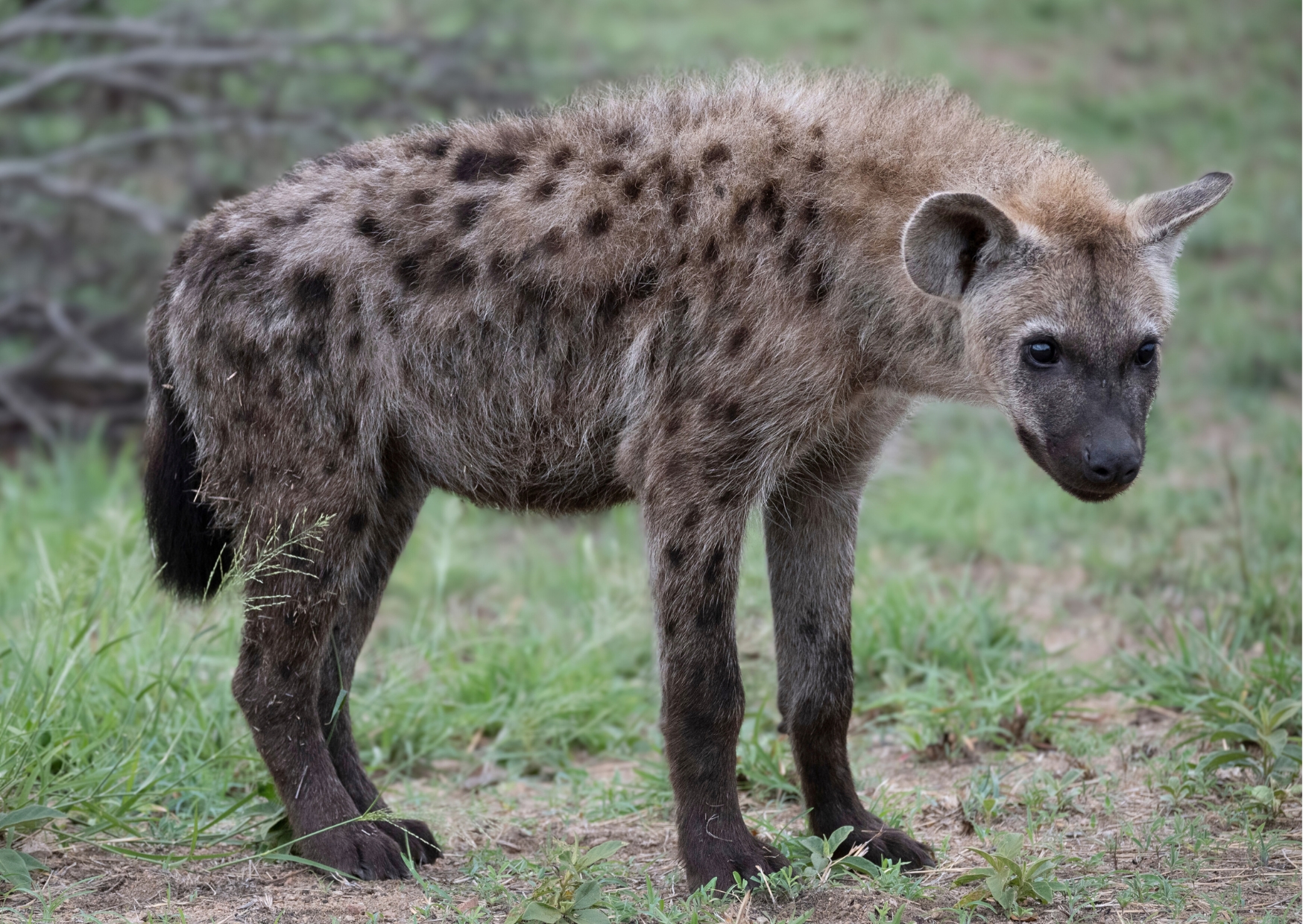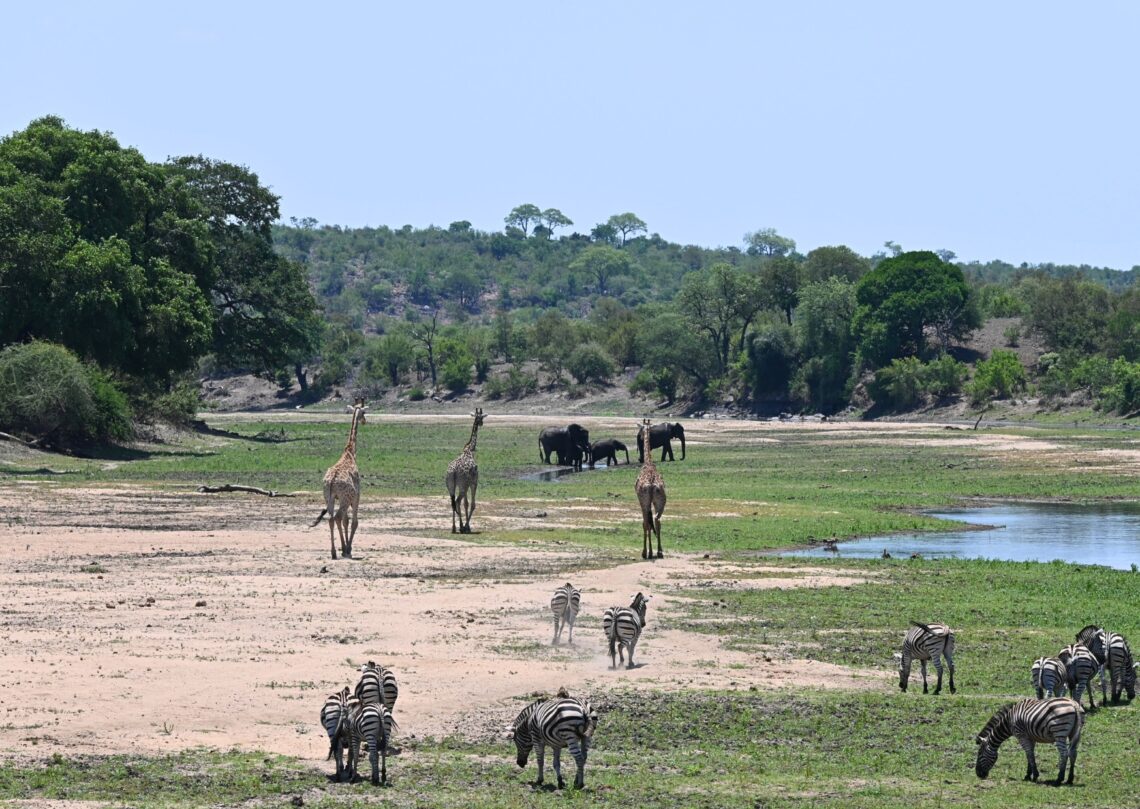
What kind of animals are in Kruger National Park?
Kruger National Park is home to a whopping 1500 animal species! On one end, there’s the dung beetle, a 5-30 mm insect, who is often found working tirelessly in a rather precarious position in a pile of poop. On the other end, there’s the African elephant, the largest land animal, who’s brute force can easily rip a tree from its roots.
Paul and I spent an exciting 10 days cruising through Kruger on our self-drive safaris, and we had the privilege of witnessing some fascinating animals in the wild.
With the Golden Globe awards this month, it got me thinking—if the animals at Kruger National Park had their own award show for their quirky personalities and impressive traits, who would snag the top prizes? After all, these creatures deserve their moment in the spotlight!
Now, if I went into detail about every single animal in Kruger, I’d have everyone asleep by the end. And let’s be honest, I didn’t see all 1500 animal species in 10 days—I’m no magician!
So, my focus is on the animals that stood out to me in a special way—perhaps it was their lightning speed, their unique calls, or their undeniable cuteness.
Award Categories
1. Best Pancake Maker Award
2. Fashionista Award
3. Best Baby-Maker Award
4. Workaholic Award
5. Horns of Glory Award
6. Stinkiest Award
7. Ultimate Fighter Award
8. Highest Kill-Count Award
9. Marathon Speedster Award
10. Siesta Master Award
11. Survivor of the Fittest Award
12. Battle of the Sexes Award
13. Yoga Master Award
14. Most Powerful Bite Award
15. Best Friends for Life Award
16. Teamwork Award
17. Smarty-Pants Award
18. Emerging Vocalist Award
19. Best Comedian Award
20. Most Valuable Animal (MVA) Award
1. Best Pancake Maker Award
Winner
African Elephant
Average weight: 6,600 – 13,000 lbs.
An elephant’s stomp is not only strong enough to flatten pancakes, a beloved breakfast staple, but it could also crush a human or even a lion. I’ll stick to homemade pancakes instead.
Runner-ups
White Rhinoceros
Average weight: 6,600-9,900 lbs.
Hippopotamus
Average weight: 3,500-9,900 lbs.
The next two heavyweight champs in Kruger are the white rhino and the hippo. They could flatten anything that stands in their way—except, of course, for a full-grown African elephant!
2. Fashionista Award
Winner
Zebra
There’s no contest here. With their striking black and white stripes, zebras are always prepared for a black-tie event. Plus, they never have to worry about anyone else showing up in the same outfit—each zebra’s stripes are as unique as human fingerprints.
Runner-ups
Leopard and Cheetah
Both boast gorgeous coats that are always in fashion, but their similar ‘spots’ might lead to one ‘stealing the show’. From afar, both of these animals may appear to have ‘spots’, but leopards actually have rosettes—clusters of black spots—while cheetahs display distinct individual black spots scattered over their bodies.
3. Best Baby-Maker Award
Winner
Impala
With 130,000 of them in Kruger, impalas are the most common animal to see. They are frequently spotted darting across the road.
Runner-up
Cape Buffalo
They are the second highest animal population in Kruger, with an estimated 48,000 animals. One herd we came across was particularly large with 200+ buffalo on a quest to find a nearby watering hole.
4. Workaholic Award
Winners
Dung Beetle
Elephants alone can deposit upwards of 150 kg of dung everyday, so dung beetles have their work cut out for them.
Ants
In the bustling world of ants, besides the queen who’s responsible for reproduction, the rest of them are ‘workers’. They work tirelessly around the clock, squeezing in quick 1-minute catnaps throughout the day or night, all for the survival of the colony.
Honey bees
When you hear “Busy as a bee,” it’s no surprise! Worker bees put in serious overtime, clocking in for a whopping 12 hours a day! Suddenly, a 40-hour work week sounds like a leisurely vacation.
5. Horns of Glory Award
Winner
Kudu
Male kudus have horns that grow in the shape of a corkscrew reaching 6 feet long. In the animal kingdom, the bigger, the better! Large horns are often used for protection in a battle, to demonstrate dominance within a herd, and for mating rituals to win over the ladies.
Runner-up
Sable Antelope
With horns that can extend from 2 to 5.5 feet in length, they certainly stand out among the most impressive horned animals at Kruger.
6. Stinkiest Award
Winner
Dung Beetle
Dung beetles ‘Live, Eat, Sleep, and Breathe’ poop, which is kind of the life of a parent with a toddler. It’s no wonder they don’t have the best body odour. Their efforts help with seed dispersal, promoting new plant growth, and reducing parasites. Kudos to them for doing the dirty work!
Runner-up
Vultures
They are known for spending their days scavenging for decaying animals to eat. As a defense mechanism, they vomit or defecate to keep predators away and to rid their bodies of excess. Despite their unpleasant odour, they play an important role as the ‘cleanup crew’. By removing the dead carcasses, vultures in turn put nutrients back into the soil and reduce the spread of diseases.
7. Ultimate Fighter Award
Winner
African Elephant
Considered the strongest animal in the world—elephants have 40,000 muscles in their trunks alone! Their immense size and weight, coupled with their remarkable strength, make them an incredible force to be reckoned with, and they will go to great lengths to safeguard themselves and their families.
As gentle giants and plant-eaters, elephants have zero motive to prey on other animals. They typically engage in fights only under certain circumstances: when provoked, to defend their loved ones, or during the musth period when adult male elephants experience a spike in hormones, leading to increased aggression.
Runner-up
White Rhinoceros
Like elephants, rhinoceroses are herbivores. Nevertheless, they can leverage their speed, substantial weight, two-inch thick skin, and three-foot-long horns to their advantage when facing a threat.
8. Highest Kill-Count Award
Winner
Mosquitoes
They are the deadliest animal on Earth, killing over 700,000 people every year by spreading diseases. Kruger National Park is in a low to medium risk zone for malaria, so plan accordingly.
The mosquitoes weren’t nearly as bad as I expected for the rainy season. We opted not to take malaria pills, but since these annoying pests love my sweet blood, I wore lightweight pants and/or bug spray, and I always had a long sleeve shirt on hand.
Runner-up
Humans
Hunting, poaching, speeding and environmental damage all contribute to the loss of animals in Kruger National Park every year. If we’re not careful, some animals could become extinct forever—although, I wouldn’t be heartbroken if mosquitoes disappeared.
9. Marathon Speedster Award
Winner
Ostrich
Peak speed: 43 miles/hr; Continuous: 30-38 miles/hr
Ostriches may not be the fastest animal in the world, but they have incredible endurance. It’s believed that they can finish a marathon in 45 minutes.
Runner-up
Wildebeest
Peak speed: 50 miles/hr; Continuous: About 30 miles/hr
Wildebeest are natural athletes; calves are able to run just minutes after they are born. This certainly comes in handy if they have to outrun a lion.
10. Siesta Master Award
Winner
Lions
Male lions can snooze for as long as 20 hours daily! As ambush hunters, they utilize this resting period to conserve energy and manage their body temperature, ensuring they are ready for a chase.
Runner-up
Hippos
These hefty dreamers sleep for over 13 hours a day, and they spend most of that time sleeping underwater! Their skin is very sensitive to the sun, so they pop up every 5 minutes for a quick breath, and continue snoozing away.
11. Survivor of the Fittest Award
Winners, 3-way tie
African Elephant
They can live to be as old as 74 years old, similar to the average life expectancy for humans.
Nile Crocodile
Their average life expectancy is debatable: Between 45-100 years
Leopard Tortoise
They are estimated to live between 50-100 years old.
12. Battle of the Sexes Award
Winner
Females
According to recent studies, female animals, on average, live 18% longer than males.
This raises an intriguing question: Is there a difference in life expectancy between males and females living together in a patriarchal or matriarchal society, dominated by either gender, versus surviving on their own?
13. Yoga Master Award
Winner
Tortoise
These little zen warriors can effortlessly tuck themselves into their shells faster than you can say “downward dog!” Turtles embody chill vibes, embracing the slow life while spreading peace, love, and harmony. Namaste!
Runner-up
Dung beetle
Living the dung life might not be glamorous, but these little champs pack a punch of stamina and agility, rolling and shaping poop like pros! And hey, their pint-sized presence guarantees a peaceful, if slightly stinky, world!
Honorable mentions
Giraffe
With their long limbs and naturally quiet demeanor, giraffes face unique challenges in adapting to their environment. It’s quite amusing to observe them as they ‘spread eagle,’ positioning themselves with their legs wide apart to reach a watering hole.
Vervet monkeys
These playful creatures have only perfected one aspect of yoga—flexibility. Vervet monkeys exhibit remarkable agility, swinging between tree branches while twisting and turning in every direction. However, their high energy and frequent hyperactivity might not be the best fit for a peaceful meditation circle.
14. Most Powerful Bite Award
Winner
Nile Crocodile
Their jaw-crushing bite force is 5000 lbs per square inch— 25 times the strength of a human’s bite. I will happily stay clear of these deadly animals.
Runner-up
Hippopotamus
They have a mighty bite force of 2000 lbs per square inch. Their bite may not be as strong as a crocodile, but they could easily rip one apart in seconds.
15. Best Friends for Life Award
Winner
African Elephant
Renowned for their remarkable memory, African elephants can recognize old friends even after many years apart, and they are one of few animals that grieve the loss of loved ones.
While they don’t mate for life, female elephants maintain lifelong familial bonds. Their connections extend beyond their own kind; they also form strong relationships with humans. Numerous stories illustrate this bond, including those recounted by author Lawrence Anthony in his book “The Elephant Whisperer.”
Runner-ups
Wild dogs
The alpha pair, a dominant male and female are monogamous, and mate for life. Their long term devotion to each other and their pack is a true example of lasting friendship.
Lions
While they don’t mate for life, lionesses tend to stick together with their pride throughout their lives to hunt and raise their cubs.
Oxpecker bird and large mammals
They have a symbiotic friendship, a mutually beneficial relationship between two species.
The oxpecker is the ultimate hitchhiker! They cozy up on the backs of large mammals, like giraffes, rhinos, and zebras, munching on pesky ticks for a tasty snack. It’s a win-win: the birds get a buffet and a free ride, while their mammoth buddies stay tick-free and get a heads-up on any lurking threats.
16. Teamwork Award
Selecting a clear winner in this category is challenging because the truth is that a number of animals rely heavily on each other. As a group, they might hunt or search for food together, leverage group strength to construct shelters, or they may rely on their herd for protection against predators. Unlike individualism, which focuses on self-reliance, the best chance of survival for many animals hinges on the cooperation of their group.
“Teamwork makes the dream work” ~John C. Maxwell
Winners
Lion
Alone, a lion is vulnerable, even to herbivores. Those feisty plant-eaters won’t hesitate to defend their turf. But bring in a pride of lionesses, and you’ve got a dream team! They’ll circle their dinner like it’s a game of predator tag, while the male lion plays lookout, flexing his muscles and keeping an eye out for any sneaky intruders.
Wild Dog
Wild dogs would struggle on their own due to their strong pack mentality. They typically live with other familial females and their cubs. When they hunt, they divide responsibilities: some females remain in the den to safeguard the pups, while others hunt for food. Their high level of communication ensures an 80% success rate when they hunt.
African Elephants
Guided by the matriarch, the oldest female leader, these magnificent creatures journey great distances in search of food and water during times of scarcity. With their survival on the line, there’s no room for bickering about their next steps.
It’s typical for other females within the herd to assist mothers in nurturing the calves, ensuring the strength and safety of the group.
Cape Buffalo
A buffalo herd can vary from 50 – 2000 members, and they rely heavily on each other. On their own, they would be much more vulnerable to predators, however, a herd of buffalo can kill fierce animals, including lions, to defend their territory.
Warthogs
The females and their offspring form groups known as sounders. They work together as a team to help care for the young piglets, and they may even nurse the babies if they have experienced the loss of their own.
17. Smarty-Pants Award
Winner:
African Elephant
As the land animals with the largest brains, elephants are regarded as some of the most intelligent creatures in Kruger, but also on the planet. They showcase their smarts through impressive problem-solving skills, high emotional intelligence, effective communication, and a remarkable long-term memory that’s comparable to humans.
Runner-up:
Hyena
Hyenas might have a reputation for being the sneaky bandits of Africa, but they’re highly intelligent! With their sharp problem-solving skills, they adapt to whatever curveballs the environment throws at them. They use their detective skills to look for clues in their surroundings, such as a vulture circling a recent kill, to keep them one step ahead of the game!
18. Emerging Vocalist Award
Winner
Zebra
They may not be as obvious about their vocal abilities, like an elephant trumpeting or a lion’s roar, but zebras have a secret–they can make enough sounds to have a one-man band. Closely related to horses and donkeys, they can snort, nicker, bray and even have a high-pitched bark.
Runner up
Ostrich
These feathered giants can belt out some seriously loud tunes! From hissing to honking and even whistling, they’ve got a whole symphony for asserting dominance, sounding the alarm, and serenading their love interests.
19. Best Comedian Award
Winner
Baby elephant
These little bundles of joy are like tiny humans in the animal kingdom! Watching them roll around in the mud is a comedy show waiting to happen. They splash around with their mini trunks, wrestle with their siblings, and eagerly trumpet loud and proud to prove that they’re ‘big’ like mom and dad.
We couldn’t get enough of the sight of them racing to the watering holes with the enthusiasm of a kid in a candy shop—trunks waving, ears flapping, wiggly legs that can barely keep up with the excitement, and pure delight in their smiles!
Runner-up
Vervet Monkey
They are undeniably mischievous as they won’t hesitate to steal food or other items if left unattended, but they are particularly entertaining to watch when they’re grooming each other. They nibble at each other’s armpits, eyeballs, ears, etc. in search of fleas and ticks. It’s like a mom trying to wipe her baby’s face, except 10 times worse!
20. Most Valuable Animal (MVA) Award
Winners
All Animals
Every living creature plays a role in keeping harmony among the plants and animals in Kruger for the best success. If there’s an imbalance, then they can all suffer the consequences, including humans.
Final thoughts
With such a wide variety of animal species soaring through the skies, roaming the savannah, and hiding in the shallow waters, Kruger is full of surprises around every corner.
Check out my other Kruger post to learn more about our experience with the ‘Big 5’.


You May Also Like

Cape Town, South Africa: Short on time? 5 Fun Things to Do
March 7, 2025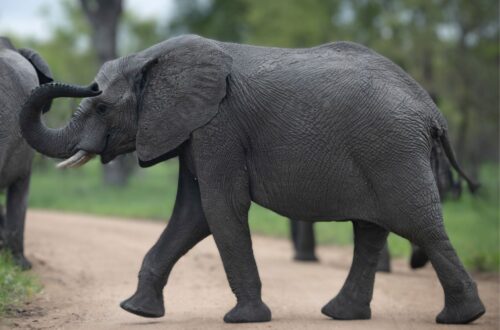
Travel Stories of the ‘Big 5’ at Kruger National Park
January 6, 2025
